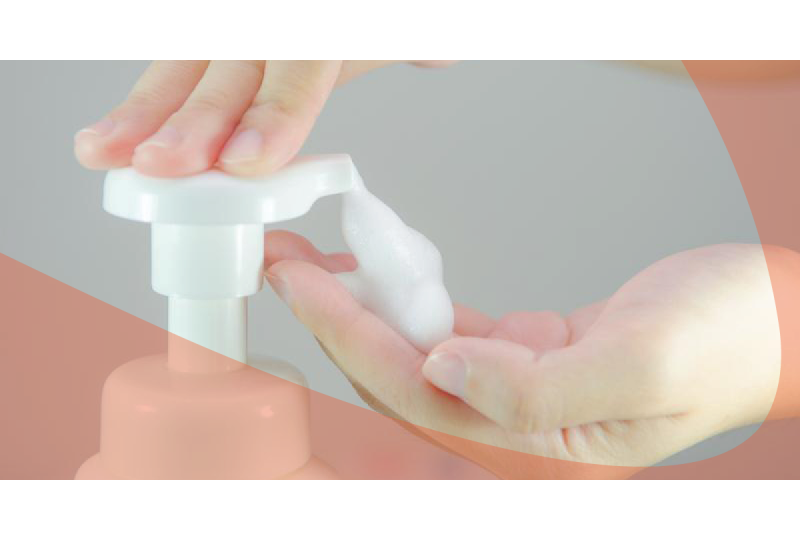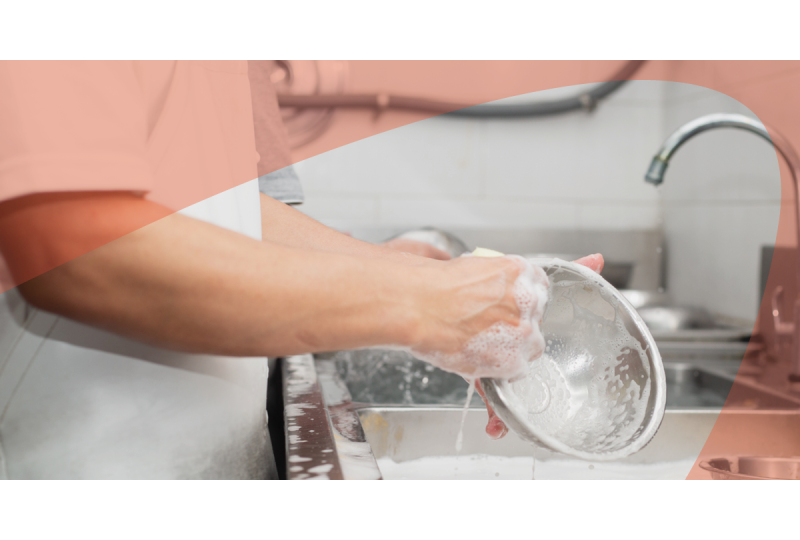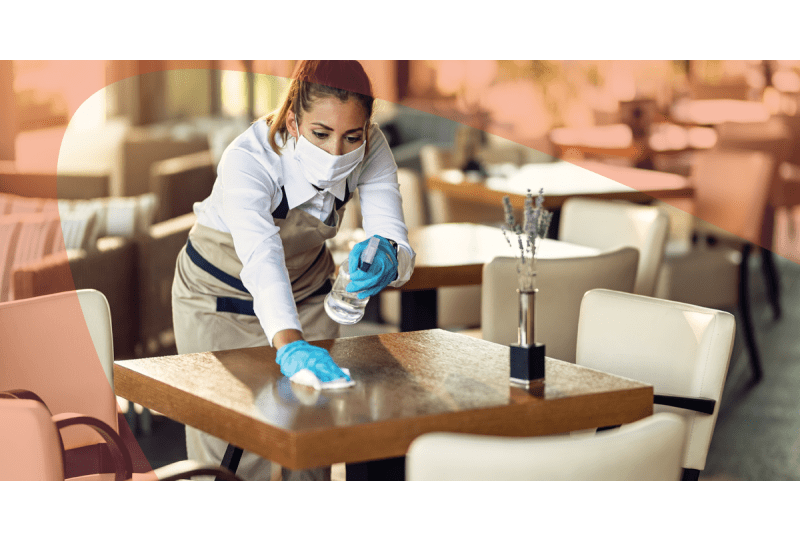Facility and food preparation hygiene is paramount whether you run a restaurant, cafeteria, or any food service establishment. It's not just about creating a pleasant environment; it's about preventing foodborne illnesses, minimizing cross-contamination, and ensuring the highest level of food safety.
In this article, we'll delve into the critical aspects of kitchen hygiene and how Swish, your single-source supplier for quality cleaning supplies and equipment, can help you achieve these goals.
The Difference Between Cleaning, Disinfecting, and Sanitizing
Before we dive into the specifics of maintaining a clean and safe commercial kitchen, let's clarify the difference between cleaning, disinfecting, and sanitizing.
- Cleaning: This is the process of removing dirt, debris, and visible impurities from surfaces. Cleaning alone does not kill germs, but it's the crucial first step in any hygiene regimen.
- Disinfecting: Disinfecting involves using chemicals to kill germs and bacteria on surfaces. It goes beyond cleaning and is essential in high-risk areas like food preparation spaces.
- Sanitizing: Sanitizing reduces the number of bacteria on surfaces to a safe level, especially in areas where food is prepared and served.
The Importance of Dwell Time
Now, let's talk about a critical factor in hygienic cleaning: dwell time.
- Dwell Time: To effectively disinfect or sanitize surfaces, allowing the cleaning products to "dwell" on the surface for a specified amount of time is crucial. This ensures the chemicals have enough time to work their magic and eliminate harmful microorganisms. Always read the manufacturer's instructions and refer to the Safety Data Sheets before using any cleaning chemicals.
Areas to Focus on and Cleaning Frequency
Now, let's discuss which specific areas within a commercial kitchen to focus on and how often you should clean them.
- Food Preparation Surfaces: These are the heart of your kitchen. Clean food preparation surfaces thoroughly before and after each use. Disinfect them at least once every two hours during busy periods.
- Cooking Equipment: Ovens, grills, stovetops, and fryers should be cleaned daily. Ensure that all grease and food residue are removed to prevent fire hazards.
- Refrigerators and Freezers: Clean and sanitize these appliances weekly to prevent mould and bacteria growth. Pay special attention to seals and handles.
- Storage Areas: Clean and organize storage areas regularly. Discard expired items and clean shelves and containers as needed.
- Dishwashing Stations: Clean and sanitize sinks, dish racks, and dishwashing equipment daily. Bacteria can thrive in these areas if not properly maintained.
- Floors and Walls: Clean and sanitize daily. Pay attention to corners and hard-to-reach spots where dirt can accumulate.
- Exhaust Hoods and Vents: Grease buildup in these areas can pose a fire hazard. Clean and degrease exhaust hoods and vents monthly or as needed.
- Utensils and Cutting Boards: Wash and sanitize utensils, cutting boards, and knives after each use. Use separate cutting boards for raw meats and vegetables to prevent cross-contamination.
Avoiding Cross-Contamination
Cross-contamination is a major concern in any commercial kitchen, as it can lead to foodborne illnesses and compromised food safety. Common causes of cross-contamination include using the same cutting board for raw meat and vegetables, not properly washing hands and utensils between tasks, and storing raw and cooked foods together.
To avoid cross-contamination, follow these general guidelines:
- Color-Coded Cutting Boards: Use color-coded cutting boards to designate specific tasks. For example, use one colour for raw meats and another for vegetables. This reduces the risk of transferring harmful bacteria.
- Hand Hygiene: Ensure that all kitchen staff regularly wash their hands with soap and warm water for at least 20 seconds. Hands should be washed after handling raw food, using the restroom, and touching surfaces that may harbour bacteria.
- Separate Storage: Store raw meats and seafood separately from ready-to-eat foods to prevent potential drips or leaks from contaminating other items. Use airtight containers to seal raw foods and prevent them from coming into contact with other ingredients.
- Proper Cleaning and Sanitizing: Clean and sanitize all utensils, cutting boards, and surfaces thoroughly after each use. Disinfect countertops and equipment regularly to kill harmful bacteria.
You should follow the local and industry-specific regulations. For detailed food safety recommendations, visit the Government of Canada website here.
Recommended Chemicals Solutions from Swish
As your trusted supplier, Swish offers a wide range of cleaning, disinfecting and sanitizing chemicals tailored to your needs.
Some of our recommended products for maintaining a clean and safe commercial kitchen include:
Swish Food Service 1000 Disinfectant/Cleaner: Removes stubborn soils and provides highly effective disinfection on most hard, non-porous, inanimate surfaces.
Enviro-Solutions® ES24 Disinfectant Cleaner: A concentrated liquid cleaner and disinfectant with dual quaternary ammonium to provide broad range removal of numerous bacteria and viruses.
Enviro-Solutions® ES512C Sanitizer: Designed for broad-spectrum action, this premium, concentrated, environmentally responsible sanitizer kills microorganisms on clean surfaces to provide peace of mind sanitizing. It can even control mould and mildew.
ServClean® Sanitize Final Rinse Sanitizer: Deodorizes chronically smelly areas, such as garbage storage, that are prone to odours caused by microorganisms. It can also be used to sanitize previously cleaned surfaces to remove illness-causing pathogens.
Enviro-Solutions® ES65H Hydrogen Peroxide Disinfectant Cleaner: Versatile and effective, this EcoLogo-certified formula offers a one-product program with multiple dilutions to clean and disinfect with only one step. Food-grade approved, and DIN-registered, ES65H kills 99.99% of bacteria, fungi, and viruses.
Check out a more detailed list of recommended solutions to reduce the risk of cross-contamination here.
In the world of commercial kitchens, cleanliness and safety are non-negotiable. Preventing foodborne illnesses, avoiding outbreaks, and maintaining impeccable food preparation hygiene are essential for your business's success. With Swish as your single-source supplier, you can trust that you have access to the best-in-class cleaning supplies and equipment and the expertise to help you overcome any hygiene challenges.












